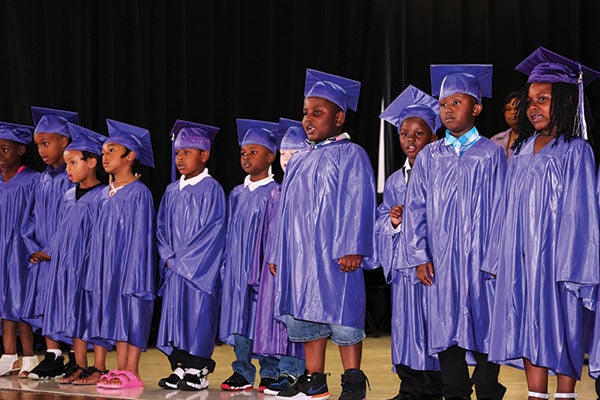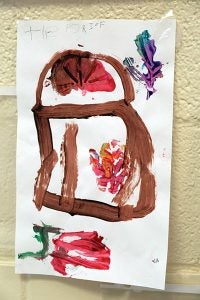Community School addresses at-risk children’s needs
Meeting the needs of the whole child is a goal in public schools. This goal has become a reality at ECU’s Community School, where a network of university and local partners provide the support elementary school students and their families need to be successful.
The Community School was established in 2016 by an N.C. General Assembly law requiring the UNC Board of Governors to improve student performance in low-performing areas by creating lab schools.
To fulfill this, the Community School implements wraparound services, which address not only academics but also the physical, social and emotional well-being of the child. Here’s a snapshot of the student body:
- All transferred from a low-performing school.
- All were considered academically at-risk.
- 88% are considered at the federal poverty level.
- 12% qualify for exceptional children’s services.
To address these students’ needs, the staff is composed of five K-5 teachers, four teacher assistants, a special education director/coordinator, a full-time nurse, a full-time social worker, an administrative assistant and a principal.

Students stand during the school’s first kindergarten graduation ceremony in June.
Having a full-time nurse and social worker are crucial to the wraparound services. According to principal Tracy Cole, the social worker helps families who may experience food scarcity and issues with housing and clothing. The school nurse is able to help students with asthma learn how to manage their symptoms and use their equipment properly as well as help other students who have to take medication throughout the day.
A key part of the wraparound services is the biopsychosocial screenings the College of Health and Human Performance conducts with families before the school year begins. Screeners not only ask parents and guardians about experiences their children may have had but also about the parents’ experiences. They found more than four out of five students have had at least one adverse childhood experience – abuse, neglect or other traumatic event. A quarter have had four or more ACEs.
“We have an idea of those things that have happened to our children or that they have experienced before they even walk through the door,” Cole said.
The Community School also works with the College of Allied Health Sciences, the School of Dental Medicine, the College of Nursing, the ECU Police Department, the College of Education and other departments at ECU.
Other participating organizations include Salem United Methodist Church, Hardee & Hardee law firm, Pitt County Schools and Pitt Community College.

Kindergartner Jeionni Jones drew this picture at the start of the school year.

By the following spring, Jeionni Jones was drawing detailed pictures and writing stories about them.
The students are not the only ones the wraparound services target. Cole said she encourages the faculty and staff to talk with families. “It’s just something about that personal touch that people know that you care about them, that you really do have their best interest at heart,” she said. “I think the school name, the Community School, is very appropriate for what we’re doing.”
Having a significant impact on the community is one of the long-term goals Grant Hayes, dean of the College of Education, thinks is important.
“The Community School is a great site to provide exposure and training for teachers and principals to address challenges in high-needs schools,” he said. “The school also provides educational research and professional development opportunities.”
Once the basic needs of the students and their families have been met, the Community School works to expose their scholars to a world beyond their neighborhood. Students attended an ECU women’s basketball game, participated in a Chinese New Year celebration with a parade and visited the ECU campus to explore potential careers.
Cole and Hayes said the Community School has the potential to become a model for public school education.
“The Community School has provided a unique opportunity for College of Education faculty to design an innovative curriculum to improve student performance and to be used to determine best practices,” Hayes said.
The Community School operates within South Greenville Elementary School.
